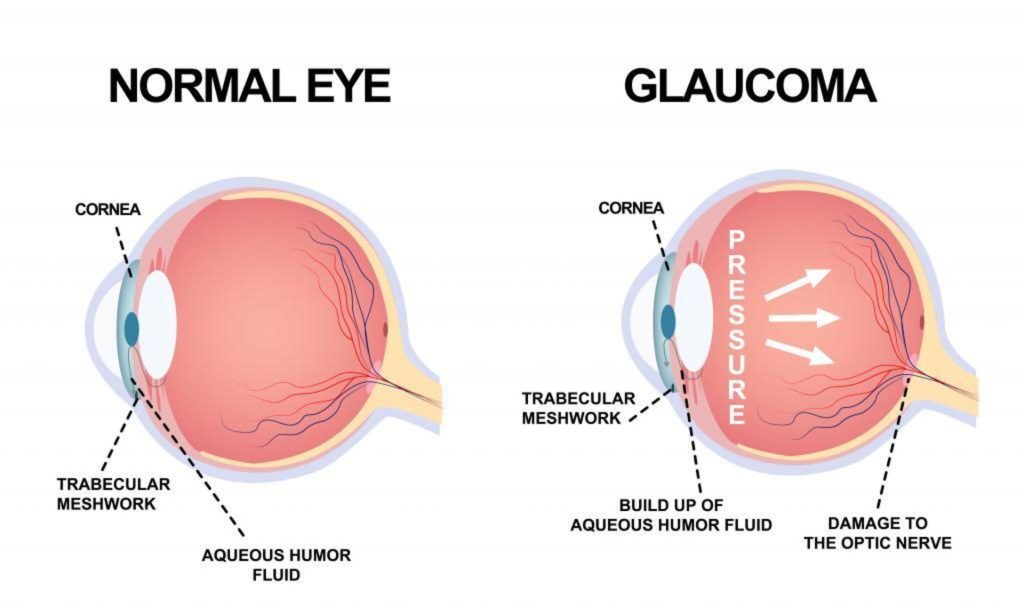Eyedrops Could Prevent Nearsightedness in Kids
According to new research, eye drops frequently administered before to eye tests may prevent toddlers from becoming nearsighted.
Eye muscles are relaxed and the pupils are dilated with atropine eye drops. Myopia, or nearsightedness, could be avoided in youngsters by using a low concentration, according to research published in the Journal of the American Medical Association.

Most Americans—about one-third of them—are nearsighted. Due to people spending more time indoors and staring at screens, The Wall Street Journal predicted the number will rise to about 60% in 30 years. Myopia that is too severe can cause cataracts, glaucoma, and retinal detachment.
Myopia, according to physicians, happens when the eyeball lengthens and light entering the eye can no longer reach the retina in the rear of the eye. The necessity for spectacles or contact lenses, which work by reflecting light back onto the retina, results from this.
According to Nimesh Patel of Harvard Medical School, who was not involved in the study, atropine drops prevent people from seeing what is right in front of them. The exact mechanism by which the drops prevent nearsightedness is unknown, he claimed.
What is Myopia (Nearsightedness )?
Myopia, a disease that affects many people, causes near objects to appear clear while far distant objects to appear blurry. It happens when light rays incorrectly bend (refract) due to the shape of the eye or specific portions of the eye. Light rays are focused in front of the retina, which is where they should be directed to illuminate the retina, the nerve tissue at the rear of the eye.
Between the ages of 20 and 40, nearsightedness typically becomes more stable after developing during childhood and adolescence. As a rule, myopia runs in families.
Nearsightedness can be verified by a simple eye checkup. You can use eyeglasses, contact lenses, or refractive surgery to correct your hazy vision.
How can eye drops improve vision in myopia?
Myopia sufferers cannot experience an immediate eyesight improvement from eye drops. However, studies have shown that over time, low-dose atropine eye drops can enhance vision. They can thereby stop the progression of myopia in youngsters. These drops can help slow the progression of myopia, lowering the risk of progressive myopia, a condition that can impair vision.
Children who have progressive myopia, or nearsightedness, need a stronger prescription at each checkup. High myopia is frequently developed in people with progressive myopia. Furthermore, when individuals become older, this may increase the chance of problems that could endanger their vision. The progression of myopia can occasionally be slowed down by using methods like myopia control contact lenses or spectacles.
Although these are excellent choices, some kids could feel uncomfortable wearing these specialised lenses. It might be simpler for these kids to receive atropine eye drops everyday just before bed.
Additionally, some eye specialists could suggest a combination of low-dose atropine eye drops along with myopia-controlling contacts or spectacles. This may be a comprehensive strategy for managing myopia.
Importance to slow down myopia progression
The likelihood of having good vision in the future can be increased by stopping the growth of myopia. Millions of kids run the risk of acquiring excessive myopia, which will cause permanent visual loss.
When myopia grows to -6.00 D or higher (severe myopia), a person may be at risk for:
- a breach in the retina known as retinal tears
- The retina separates from the back of the eye in a retinal detachment.
- A disorder known as glaucoma that can harm the visual nerve
- A cataract is a clouding of the eye’s natural lens.
- Myopia-related macular ageing
- A separation of the vitreous gel from the retina is known as a posterior vitreous detachment.
- Damage to the optic nerve is called optic neuropathy.
What are atropine eye drops?
Eye drops containing atropine have long been used in medical offices. They enlarge the pupil while also paralysing the eye’s accommodating mechanism.
For pupil dilatation, eye doctors typically employ 1% atropine eye drops in their offices. Children need a lesser dose, such as 0.01%, 0.025%, or 0.05% concentration, to control their myopia.
It is unclear how exactly atropine inhibits the progression of myopia. Atropine generally has a better effect on controlling myopia at higher concentrations. Studies are being conducted to determine the best dose and protocol.
Side effects of atropine eye drops
The small amount of atropine in the eye drops used to treat myopia shouldn’t have a significant impact on the eyes’ ability to concentrate. It has been demonstrated that atropine doses used in paediatric myopia treatment only slightly impact pupil size and up-close vision.
The following are side effects of atropine eye drops:
- sensitivity to light because of dilated pupils
- Because the accommodation has been paralysed, it is difficult to do close work, like reading.
- When administered, eye stinging
- sensitivity or allergy to the formulation in the eyes
Can eye drops improve vision in other eye conditions?
Presbyopia
The FDA has approved eye drops for presbyopia that use the medication pilocarpine, which constricts the pupil. This enables a brief improvement in vision by extending the field of vision.
Dry eye
People with dry eyes can use certain eye drops to regulate and replace their tears. Some patients’ eyesight may be improved by these drops by preserving a steady tear film, which is necessary for high visual acuity.
REFERENCES:
- https://www.allaboutvision.com/eye-care/eye-drops/can-eye-drops-improve-vision/
- https://www.pediatricophthalmologypa.com/eye-library-5/atropine-for-the-treatment-of-near-sightedness-myopia-in-children/
- https://www.webmd.com/eye-health/news/20230214/eyedrops-could-prevent-nearsightedness-in-kids
For more details, kindly visit below.
